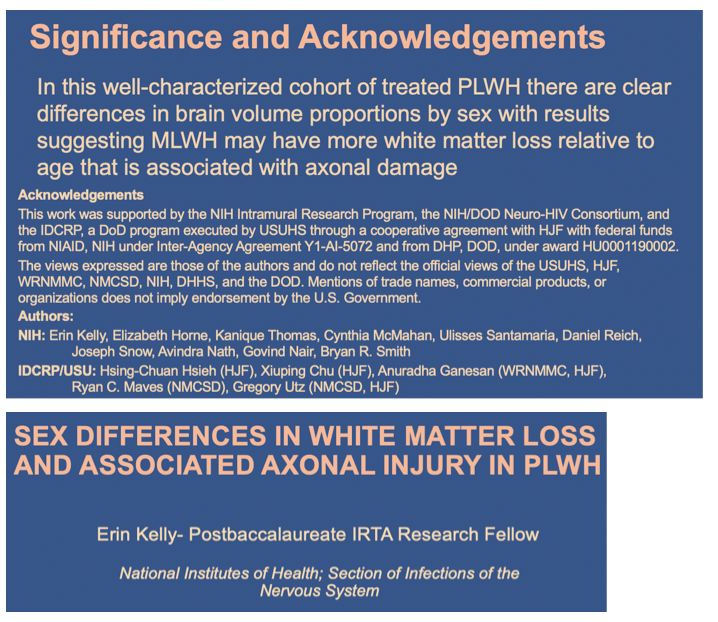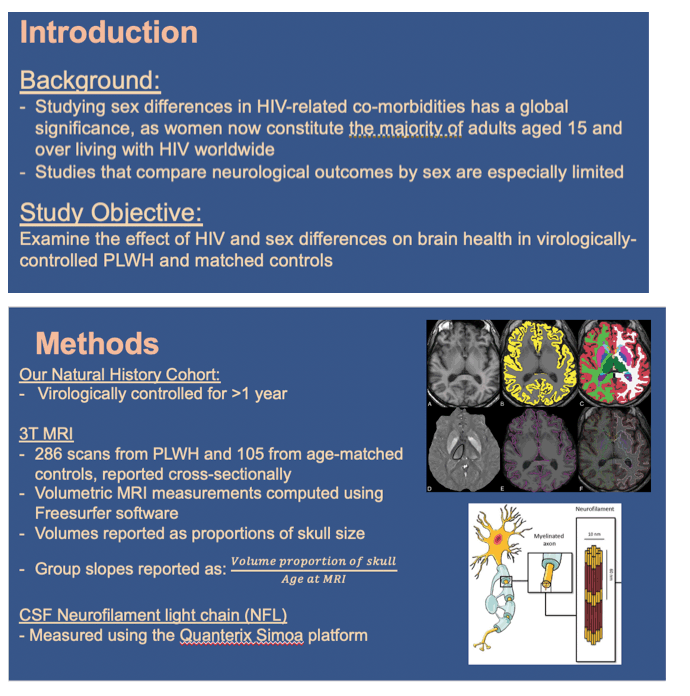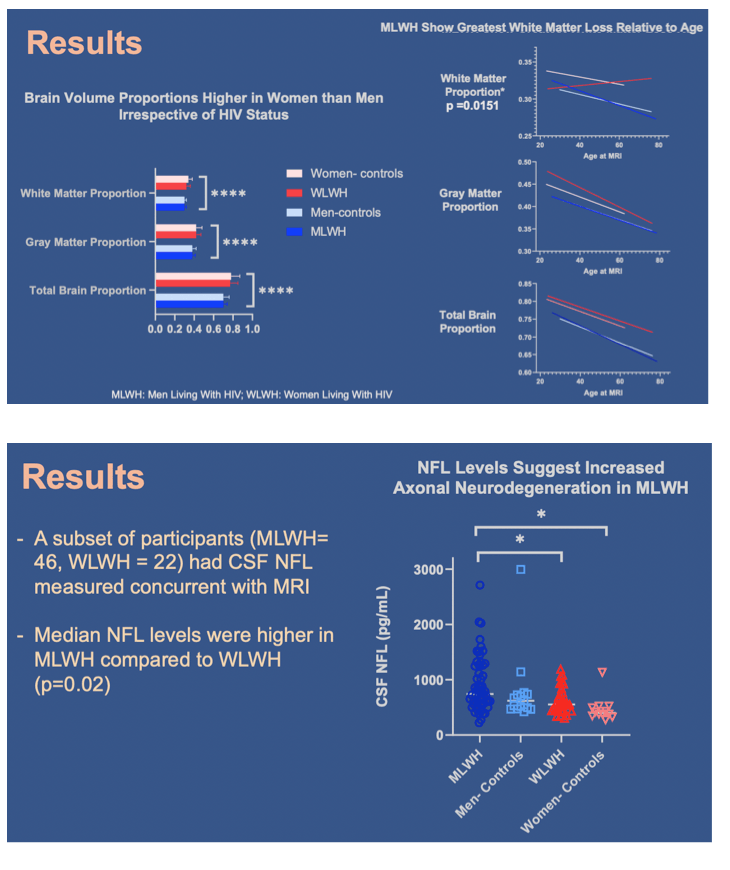 |
 |
 |
| |
SEX DIFFERENCES IN WHITE-MATTER LOSS AND ASSOCIATED AXONAL INJURY IN PLWH
|
| |
| |
CROI 2021 March 6-10 Reported by Jules Levin
Erin Kelly1, Elizabeth Horne1, Kanique Thomas1, Cynthia McMahan1, Ulisses Santamaria1, Hsing-Chuan Hsieh2, Xiuping Chu2, Joseph Snow1, Anuradha Ganesan2, Ryan C. Maves3, Gregory Utz3, Daniel Reich1, Avindra Nath1, Govind Nair1, Bryan R. Smith1
1National Institutes of Health, Bethesda, MD, USA, 2Uniformed Services University of the Health Sciences, Bethesda, MD, USA, 3Naval Medical Center San Diego, San Diego, CA, USA
Background: Studying sex differences in HIV-related co-morbidities has a global significance, as women now constitute the majority of adults aged 15 and over living with HIV worldwide. Specifically, higher levels of neurocognitive impairment have been reported in women living with HIV (WLWH) than men living with HIV (MLWH). This prompts the question of whether this difference is due to HIV-related brain changes in WLWH or better explained by other factors. Neuroimaging studies in people living with HIV (PLWH) have largely focused on comparing WLWH to women controls and MLWH to men controls or have studied one sex. By comparing brain volume proportion in virologically- controlled PLWH and controls of both sexes, we studied the effect of HIV and sex differences on brain health in the current era of widespread antiretroviral treatments.
Methods: Our prospective research cohort consists of virologically controlled PLWH and controls enrolled in a study of HIV and cognition. Volumetric measurements of participants' MRIs were computed using Freesurfer software. Volumes were converted to proportions by dividing each by estimated total intracranial volume (eTIV), thus adjusting for skull size. To examine trends in volume loss over time, total brain, white matter, and gray matter proportions were plotted against age in each group to calculate slopes. Neurofilament light chain (NFL) in CSF was measured using the Quanterix Simoa platform.
Results: 286 scans from PLWH and 105 from age-matched controls were analyzed by Freesurfer. Brain volume proportions were overall higher in women compared to men (p < 0.001 Tukey's multiple comparisons test) irrespective of HIV status. When looking at white and gray matter individually, results in Table 1 show significant differences between groups specifically in white matter slopes with evidence for the greatest loss of white matter over time in MLWH (p = 0.0151). A subset of participants (MLWH= 46, WLWH = 22) had CSF NFL measured concurrent with MRI. In this group, we found higher median NFL levels in MLWH compared to WLWH (p=0.02), suggesting axonal neurodegeneration following the same pattern as found in MRI sex differences.
Conclusion: In this well-characterized cohort of treated PLWH there are clear differences in brain volume proportions by sex with results suggesting MLWH may have more white matter loss over time that is associated with axonal damage.



|
| |
|
 |
 |
|
|